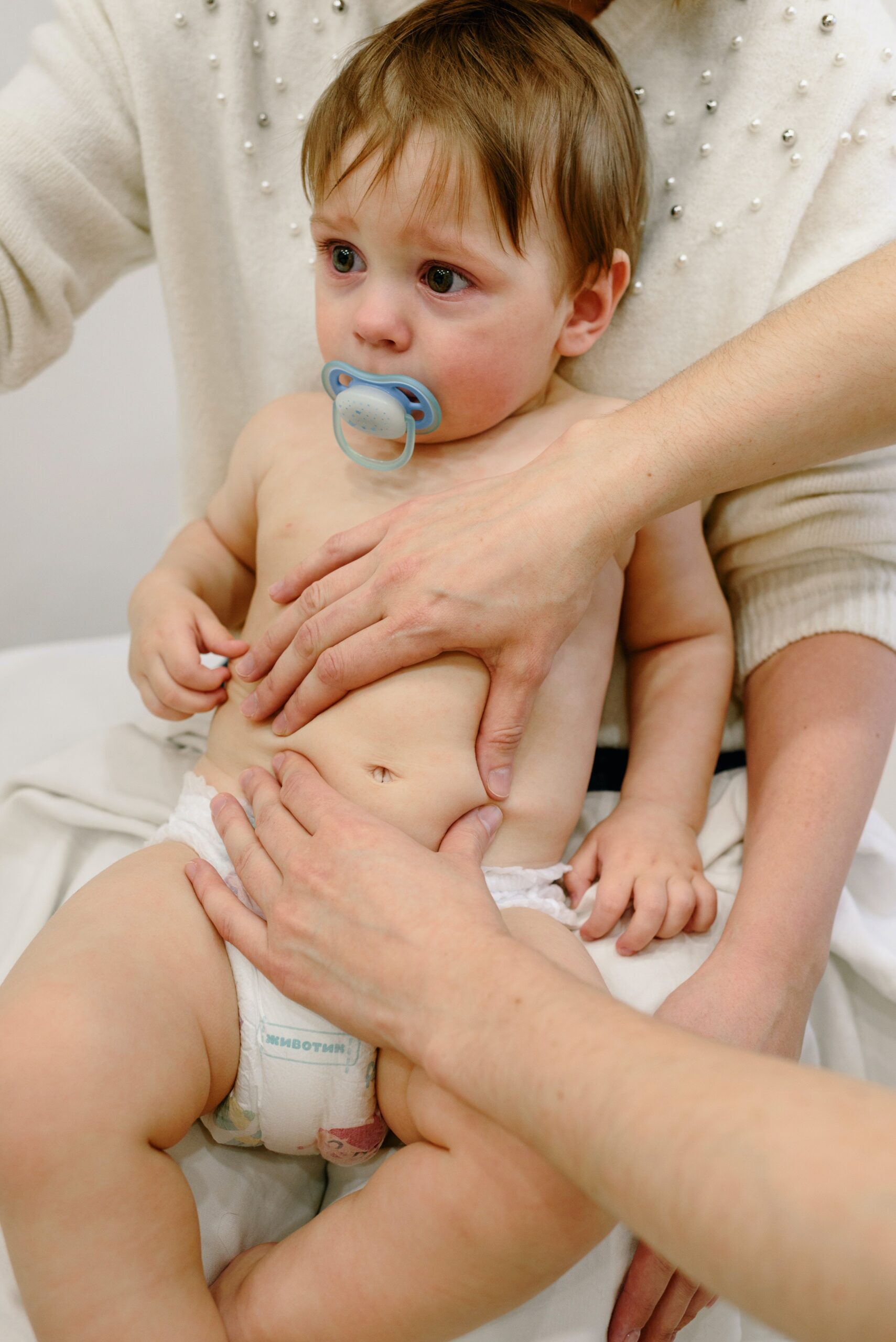The delicate nature of infants necessitates an intimate understanding of their anatomy and the utmost caution when handling them, particularly when introducing interventions such as belly massage. This practice can provide several benefits, including relief from gas discomfort, promoting improved digestion, and even serving as a calming method for soothing a restless baby. However, before undertaking this activity, it is imperative to familiarize oneself with the critical anatomical features of an infant’s body, the suitable pressure to apply, and the areas to avoid during massage. More so, mastering various massage techniques such as the ‘I Love U’ method, the belly button circle movement, and the bicycling legs approach can be pivotal in ensuring the baby’s comfort and safety, while also reaping the maximum benefits from the massage.
Understanding Infant Anatomy
Understanding Infant Anatomy for Safe Belly Massage
Belly massage for infants can bring numerous benefits including relief from gas, constipation, and colic. Yet, it’s crucial to first familiarize yourself with an infant’s sensitive anatomy. Infants’ bodies are not merely smaller versions of adults; they’re uniquely delicate and require special care.
Taking the time to research and understand the location and sensitivity of an infant’s organs will make belly massage safer and more effective. Their bellies are smaller, with the stomach, liver, spleen, kidneys, and intestines packed closely together. These organs are very delicate and sensitive and are at greater risk for damage if improperly handled.
Remember that infants are unable to communicate verbally if they’re uncomfortable, so minimizing any risk of harm through education is crucial. The abdomen is a particularly sensitive area because it houses critical organs and infant intestines are immature, which makes them more prone to certain conditions like gas or indigestion.
With adequate knowledge, you can properly apply pressure during massage, ensuring you are not pressing too hard or hurting the baby inadvertently. Newborns and infants require very light pressure, almost as light as a feather stroke. This is a key distinction compared to massaging older children or adults.
The area around the baby’s navel should be avoided, especially for newborns. This is because the umbilical cord stump may not have completely healed. Touching or rubbing this area could cause pain and possibly infection.
When performing infant belly massage, be sure to remain focused on the baby’s reactions and expressions; they’re key indicators of their comfort level. If an infant looks uncomfortable, is fussing or crying, immediately cease the massage and try again another time.
With a solid understanding of an infant’s anatomy, knowing how and where to apply pressure, you can confidently and safely perform belly massages for infants. Doing so will help alleviate various digestive discomforts and also foster a bonding experience between you and the baby.

Learning Massage Techniques
Understanding Infant Belly Massage Techniques
The basic belly massage for infants involves various specific techniques like the ‘I Love U’ technique, the belly button circle method, and bicycling legs. These techniques aim to relieve gas, aid in digestion, and soothe a crying baby.
When doing infant belly massages, use a gentle touch but apply enough pressure to be effective. Use a warm room and relax the infant first by turning on soft music or some white noise. Use a small amount of warm baby-safe massage oil or lotion.
The ‘I Love U’ Massage Technique
The ‘I Love U’ belly massage technique is intended to help ease an infant’s gas and stomach pain.
To do it, the caregiver:
- Lays the baby on a flat surface, face-up.
- Gently rubs their own hand in a smooth, continuous motion along the baby’s stomach in the shape of the letter ‘I’, starting from the right side from their perspective (left side from the baby’s perspective).
- Follows this by rubbing in the shape of an inverted ‘L’, starting from the top left of the infant’s stomach, coming down, and then across.
- Concludes with an upside-down ‘U’ motion, from lower left to lower right of the infant’s stomach and back again.
The Belly Button Circle Technique
The belly button circle massage method aids in digestion.
To do this technique, the caregiver:
- Starts with their hands at the top middle of the infant’s abdomen.
- Slowly makes clockwise circles outward towards the edges of the infant’s stomach.
- Gradually makes the circles larger to cover more of the baby’s belly, keeping the movements gentle and consistent.
The Bicycling Legs Technique
The bicycling legs technique can also relieve gas and fussiness in an infant.
To do this massage technique, the caregiver:
- Lays the baby flat on their back.
- Gently holds the baby’s legs in a half-bent position.
- Slowly moves the legs in a motion similar to pedaling a bicycle.
- Rotates the baby’s legs for several minutes.
Remember, each baby is unique; some may enjoy one technique over another. Always gauge the baby’s reactions and adapt the massage techniques accordingly.

Safety Guidelines & Best Practices
Understanding Infant Safety During Belly Massages
While massaging an infant’s belly, it is important to remember not to initiate a belly massage immediately after the baby has been fed. The reason being, a full tummy can be delicate, thus a vigorous belly massage may lead to discomfort or even cause the baby to spit up the food. It is advised to wait for at least 45 minutes post feeding to commence a belly massage.
Proper Hand Temperature During Infant Massage
An essential aspect to consider while performing a belly massage is maintaining proper hand temperature. Cold hands may cause discomfort for the baby during the massage. Therefore, before starting, rub your hands together to generate some warmth. Always ensure that your hands are clean and that your nails are short to prevent any unintentional scratches.
Observing and Respecting Baby’s Responses
One of the key elements in massaging an infant is observing their responses to the belly massage. Babies cannot verbalize their feelings so it is crucial that you pay attention to their facial expressions and body language whilst massaging. If the baby seems irritable, cries, or rigidly tenses up, it is likely that they may not be enjoying the belly massage. In such instances, it would be better to try massaging at a different time or seek advice from a pediatrician if the baby seems persistently uncomfortable.
Apply Gentle Pressure
During the massage, apply only light pressure as infants have delicate bodies. You can massage the belly in a circular motion and then gradually move towards other parts of the body. The process should be gentle and calming. You can use a baby-safe massage oil, but it’s not a necessity.
Best Practices in Infant Belly Massage
For effective baby belly massages, place the baby on a comfortable and safe surface. You can choose to perform the massage in a quiet room with minimal distractions. The massage should not exceed 15 minutes as overly long massages might exhaust the baby. Regular short massages are more beneficial than infrequent longer sessions.
In summary, massaging an infant’s belly can be a wonderful bonding experience between the caregiver and the baby. It’s essential to maintain cleanliness, create a relaxing environment, observe the baby’s responses, and follow safety guidelines for the process to be beneficial and enjoyable for both the baby and the caregiver. Always remember, if the baby seems distressed at any time, immediately stop the massage and try again another time.

With information abound on infant care, practices like belly massages present as an accessible option in tending to a child’s basic needs. But, proper knowledge and handling is indispensable to ensure the safety and well-being of the baby. It’s not just about knowing the massage techniques; understanding the ‘whens’ and ‘hows’ form a crucial part of the process. For example, it’s crucial not to massage right after the baby has fed, or ensuring one’s hand has an appropriate temperature before initiating. Observing the baby’s responses can provide insights into their comfort levels and adapt accordingly. As we navigate through understanding baby anatomy to applying massage techniques, respecting these safety guidelines and best practices becomes an integral part of promoting the baby’s health and well-being through the gentle exercise of belly massage.
